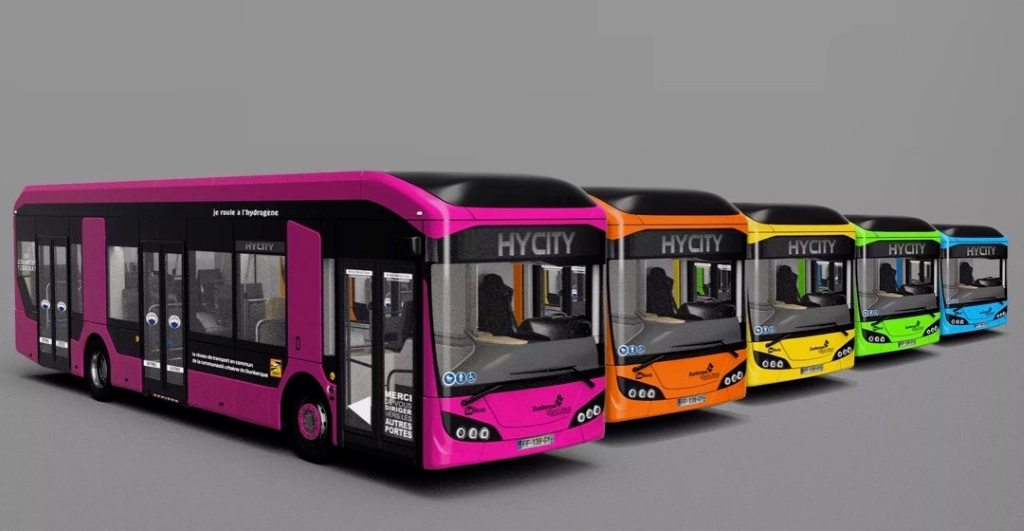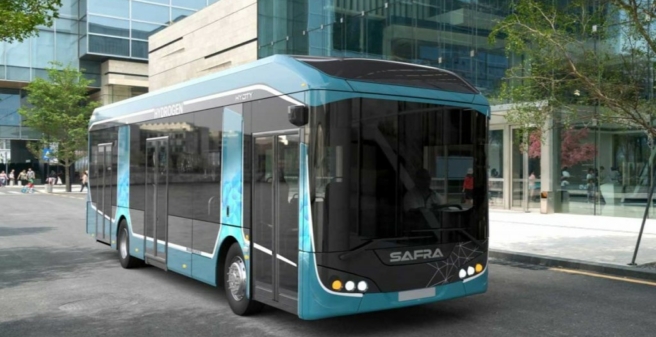
Foundation and first years
In 1955, Roger Bodoira and Marcel Espérou founded the company Espérou-Bodoira in the Rue de la Poudrière in the French city of Albi, located about 80 kilometres northeast of Toulouse and capital of the Département Tarn. Espérou was president of the company until 1962 and then sold his shares to Roger Bodoira, who thus became the sole owner.
Espérou-Bodoira began to put bodies on the chassis of other manufacturers. Mainly coaches were built. But an early company photo also shows an elaborately designed public service vehicle.
Very soon the young company trades under the name SAFRA, which is the abbreviation for “Société Albigeoise de Fabrication et Réparation d’ Automobiles”.
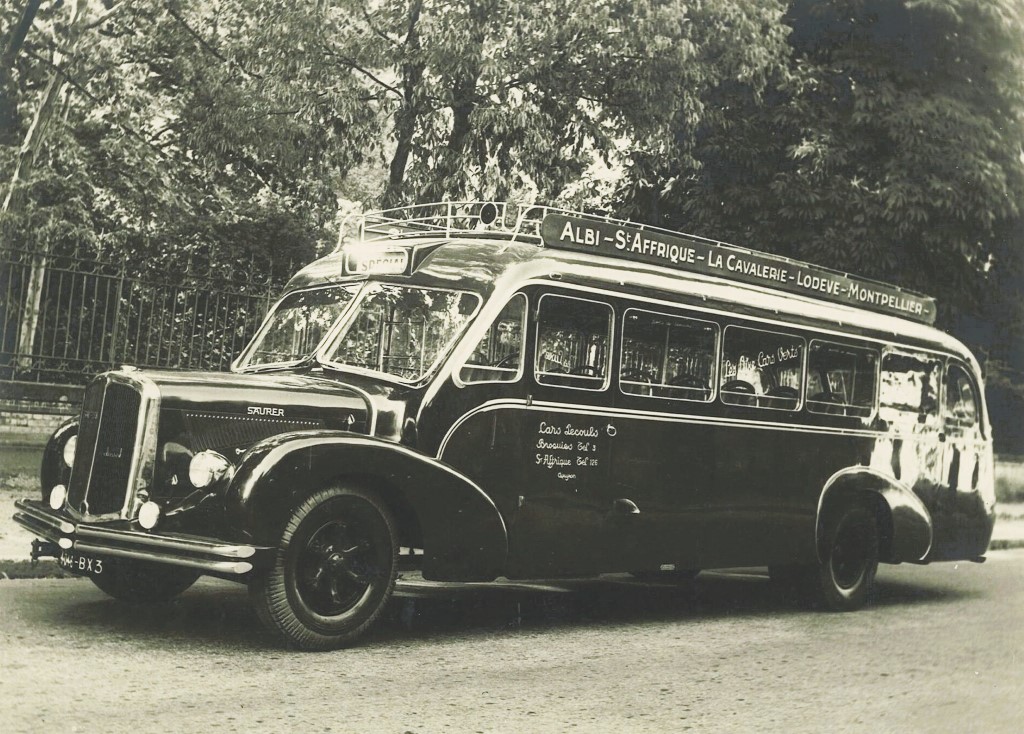
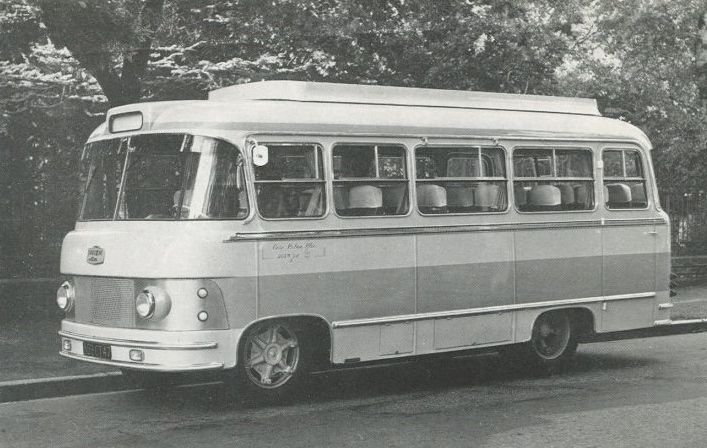
Repairs by Safra
A factory photo shows a Mercedes-Benz O 302 in 1978 being repaired at the Safra factory.
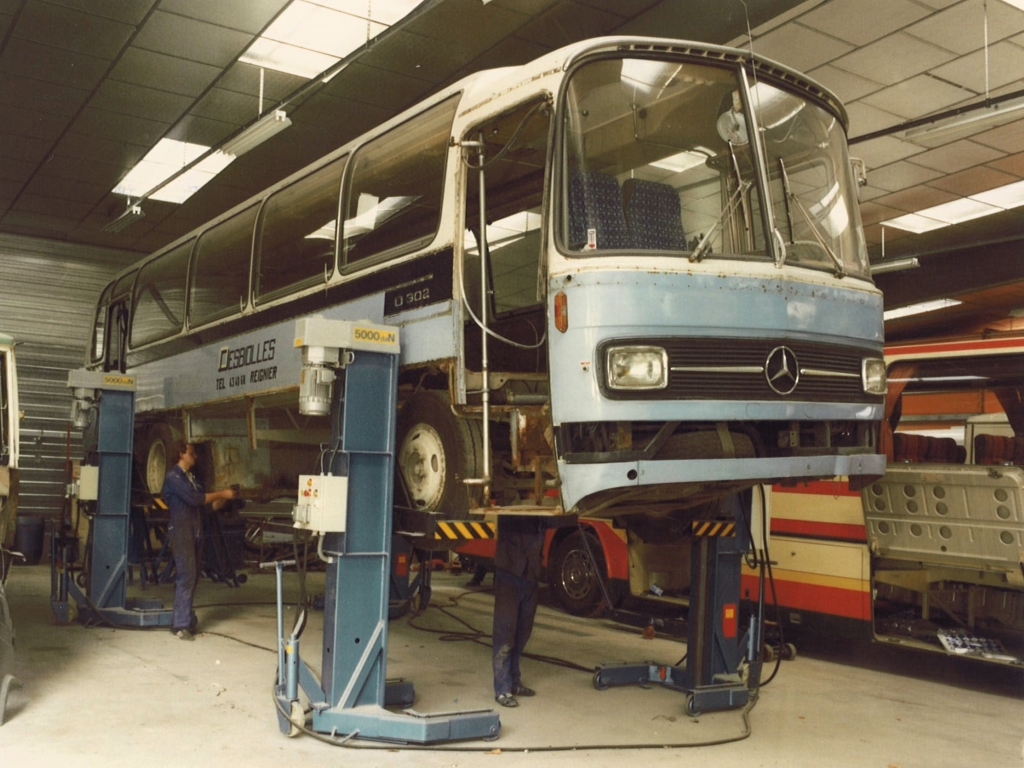
Safra specialises in public service buses
Based on its experience and the skills it had acquired in the meantime, Safra specialised completely in the sector of city (regular) buses in the seventies. Compared to the big players on the French market at that time, such as Renault (Saviem), Chausson and Berliet, Safra remained a small but fine specialist, but above all: it kept its position on the market, which was increasingly being penetrated by German suppliers such as MAN and Mercedes. Note: Saviem was temporarily the name for Renault’s commercial vehicles. The abbreviation stands for “Société Anonyme des Vehicules Industriels et de l’ Equipement Mechanique” (public limited company for commercial vehicles and mechanical equipment). It is precisely the fact that big players like Chausson and Berliet also ended up under the Renault umbrella over the years that may have enabled the “little” Safra to survive. There are customers who don’t want what everyone else has.
The Safra Businova
At “Busworld” in 2015, which was then still held at the exhibition centre in the Belgian city of Kortrijk, Safra presented an unorthodoxly styled electric city bus with the type name “Businova”. This name not only contains the word bus, but also the magic word “innovation”. A first prototype of the Businova was shown in Strasbourg in 2011. The first series-production vehicle now went to the city of Gaillac. Businova’s birthplace Albi and the cities of Toulouse and Marseille quickly followed as customers. The Businova was offered in three lengths of 9,530 mm, 10,550 mm and 11,995 mm, its width was 2,550 mm, which had become the norm internationally. Behind the rear axle, the electric motor and the batteries had found their place under the floor. As a result, the rear of the car went up four steps to a significantly raised area, which Safra calls “Belvédère”.
Hydrogen drive
And then in 2018, Safra presented the Businova as a hydrogen-powered bus. It combined a battery pack with a capacity of 132 kWh with a fuel cell with an output of 30 kW contributed by the French manufacturer Symbio. Its electric motor had an output of 350 kW, and Safra gave the vehicle’s range as 350 kilometres. The Businova took 32 kilogrammes of hydrogen in four pressurised cylinders made of composite plastic. The first six production cars went to the Artois-Gohelle region in 2019.
Meanwhile, Safra says, 80% of all Businova were ordered as hydrogen buses.
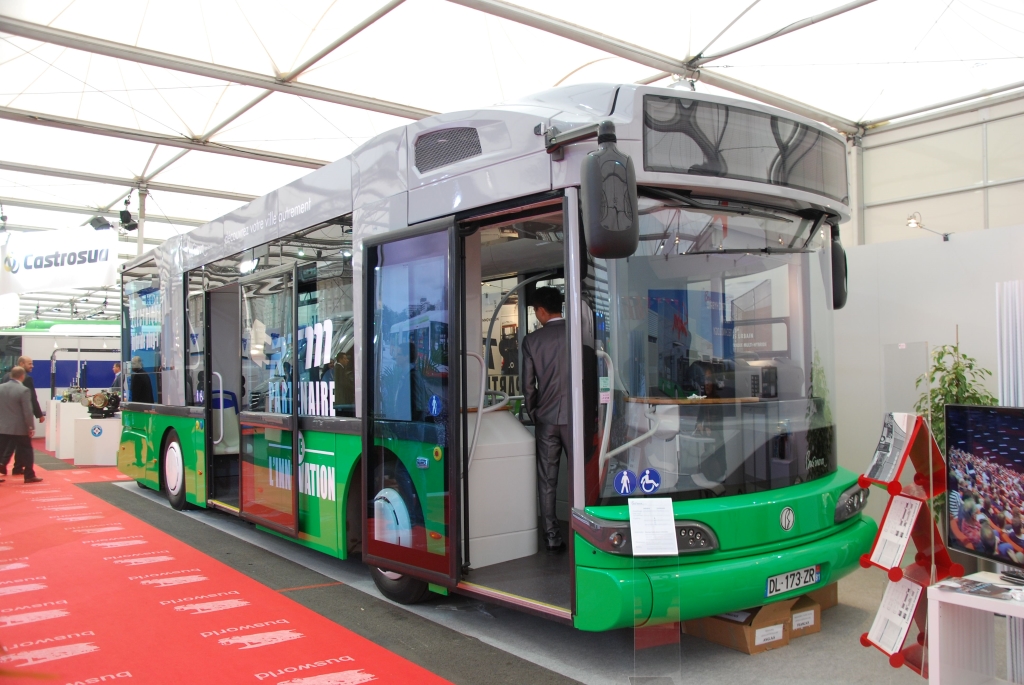
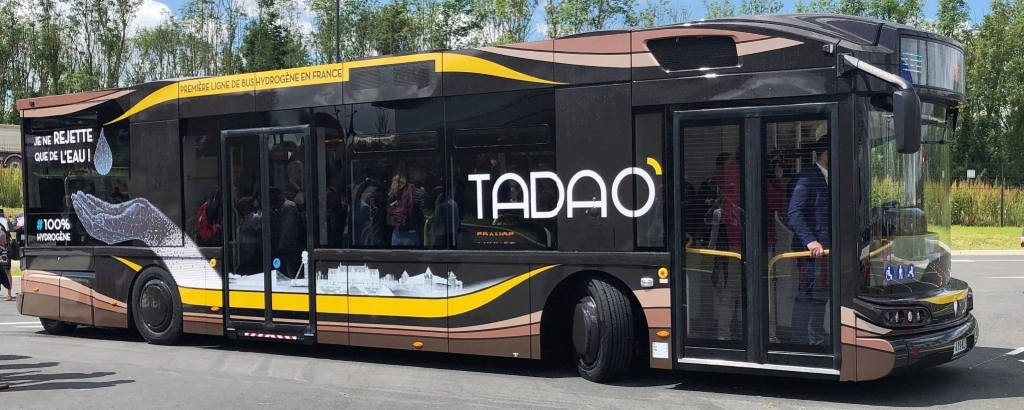
The new Safra HyCity
In spring 2022, Safra presented its new hydrogen bus “HyCity”. At first glance it is obvious: it is a close relative of the Businova.
At this year’s “Busworld” in October in Brussels, the HyCity will debut in an updated version.
Technical description
The hydrogen that the car refuels is stored in six pressurised cylinders (instead of the usual five) placed on the front of the roof at right angles to the direction of travel (usually with the direction of travel). It is stored at a pressure of 350 bar. From the pressure bottles it is fed to the fuel cell of the French manufacturer Symbio, which has an output of 48 kW. It has found its place on the roof at the rear of the bus. In the fuel cell, the hydrogen reacts with the oxygen in the air and generates electricity that directly drives two wheel hub motors in the wheels of the second axle. Each of them has an output of 115 kW, so together the bus has 230 kW. This would correspond to 313 hp for a diesel bus in the previous dimension.
The bus is 11,857 mm long, 2,550 mm wide and 3,300 mm high. The distance from axle 1 to axle 2 (the drive axle) is 5,840 mm. It reaches a total weight of 21 tonnes – and thus requires an exemption permit.
The batteries work with the cell chemistry nickel-manganese-cobalt (NMC) and have a capacity of 135 kWh.
The HyCity is available as a two- and three-door model. The two-door version has 33 passenger seats, the price for the third door is that four seats are eliminated.
Safra plans to deliver its HyCity as an articulated bus soon.
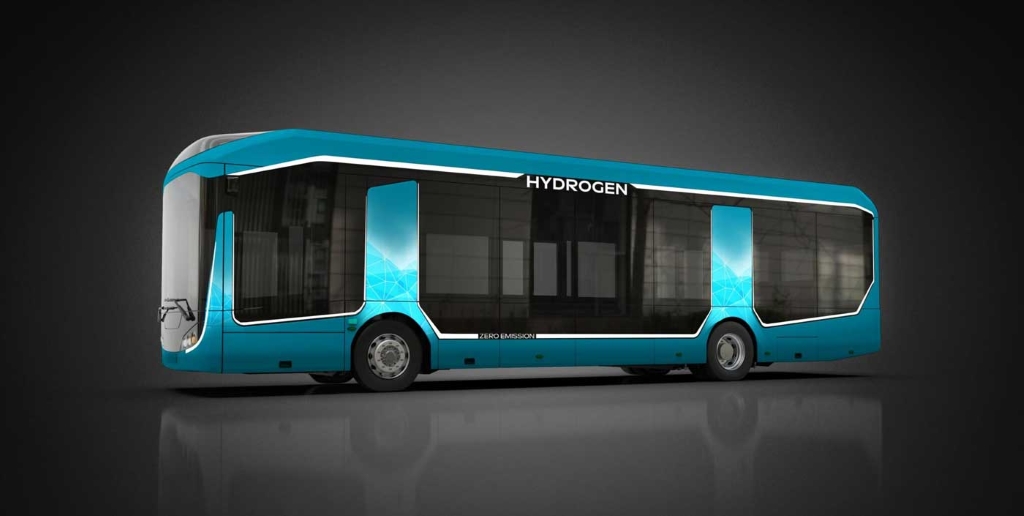

For the time being only for right-hand traffic
So far, Safra has only delivered to the French market. But they are confident enough to say: “We can also supply the other Central European markets, and we have the necessary production capacities for that.” Surely no one is thinking of France’s immediate neighbour, Germany? Yes, yes, Safra is thinking that way.
